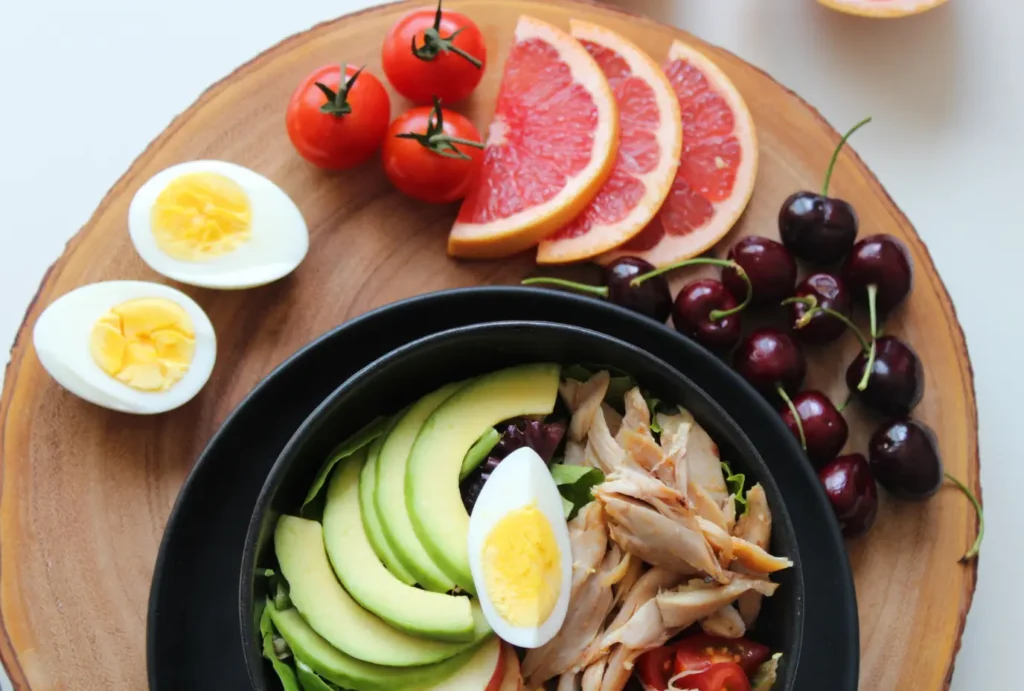If you want to shed those extra pounds or regulate your calorie consumption, a 1000 calorie meal plan is a valuable short-term plan. But let’s face it — consuming just 1000 calories in a day is not easy. And that’s why it’s necessary that each morsel should count. In this blog, you’ll find an easy and healthy 1000 calorie meal plan that will keep you satisfied, energized, and on the right track with your target.
Let’s divide it into breakfast, lunch, dinner, and snack — all nicely portioned with the perfect blend of carbs, protein, and healthy fats.

Is a 1000-Calorie Diet Right for You?
Before we dive into the meals, a brief word of warning: A 1000 calorie meal plan is extremely low in energy. It’s normally only advised for short-term use under a doctor’s orders, certainly for individuals with obesity or certain medical conditions. If you simply want to lose a small amount of weight, a more moderate deficit (such as 1200–1500 calories) is probably more maintainable and healthy.
But if you’ve been told to go on a 1000-calorie diet, here’s a nutritionally sound version that won’t make you feel deprived.

Total Daily Nutrition Goals
To fulfill the body’s minimum requirements, your meals must include a healthy proportion of:

1. Carbohydrates: ~45–65% of total calories
2. Protein: ~10–35% of total calories
3. Fats: ~20–35% of total calories
For 1000 calories, this works out more or less to:
1. 113–138g of carbs
2. 25–88g of protein
3. 22–39g of fat
Let’s see how we can do that in a day!
Breakfast: Power Start (~270 Calories)

Ingredients:
1. ½ cup rolled oats (dry)
2. 1 cup skim milk
3. ½ medium banana
Why it works:
This breakfast is a fiber-rich mix that fills your morning with slow-burning carbs and good protein. Oats keep you satisfied longer, milk provides calcium and protein, and the banana provides a natural sugar rush along with potassium.
Nutritional Breakdown:
1. Carbs: ~52g
2. Protein: ~14g
3. Fat: ~3g
Alternative: Substitute almond or soy milk if you’re lactose intolerant or like plant-based products. You can also substitute the banana with ½ cup berries to mix things up.
Lunch: Lean and Green (~320 Calories)
Ingredients:
1. 3 oz grilled chicken breast
2. ⅓ cup cooked brown rice
3. 1 cup steamed broccoli
4. 1 tsp olive oil (for cooking or dressing)
Why it works:
This lunch is a balance of nutrients. Lean chicken breast contributes high-quality protein, while brown rice contributes complex carbs and fiber. Broccoli is full of antioxidants and necessary vitamins. Olive oil not only adds flavor but also heart-healthy fats.
Nutritional Breakdown:
1. Carbs: ~21g
2. Protein: ~29g
3. Fat: ~11g
Vegetarian Swap: Use tofu or one cup of beans in place of chicken. Quinoa is a good stand-in for brown rice too.
Snack: Quick and Crunchy (~165 Calories)
Ingredients
1. 1 medium apple
2. 10 almonds
Why it works:
The ultimate fiber, crunch, and healthy fat combination, this classic pairing is just the right balance of nature’s candy and satiating fats and a bit of protein.
Nutritional Breakdown:
1. Carbs: ~28g
2. Protein: ~3g
3. Fat: ~6g
Tip: Not an almond lover? Try walnuts or pistachios. Alternatively, dip apple slices into 1 tablespoon of peanut butter for a creamy twist.
Dinner: Light Yet Satisfying (~260 Calories)
Ingredients:
1. 2 oz baked salmon
2. 1 small sweet potato
3. 1 cup mixed salad (lettuce, tomato, cucumber)
4. 1 tsp olive oil (for dressing)
Why it works:
Salmon is a fantastic source of omega-3 fatty acids and lean protein. Paired with fiber-rich sweet potatoes and a fresh salad, this meal ends your day on a clean, light, and satisfying note.
Nutritional Breakdown:
1. Carbs: ~23g
2. Protein: ~15g
3. Fat: ~12g
Vegetarian Option: Replace salmon with lentils or grilled tofu. You can even opt for a veggie stir-fry made of mushrooms, bell peppers, and chickpeas.
Pro Tips for Staying on Track with Your 1000-Calorie Diet
Drink lots of water or unsweetened herbal teas during the day.
1. Steer clear of empty calories – Avoid soda, juices, and fried foods. They contribute calories but no nutrition.
2. Use spices and herbs – Add flavor without the added calories. Garlic, turmeric, cumin, and chili powder are great.
3. Portion control – Healthy foods can be too much if portions are not controlled.
4. Listen to your body – If you are dizzily, tired all the time, and constantly hungry, this diet may be too low for you.
Final Thoughts
A 1000-calorie diet is not starving — it’s being smart about food choices and making each calorie count. With balanced meals and nutrient-packed ingredients, you can be satisfied, energized, and on the path toward your health goals.
Whether you are attempting this plan for weight loss or simply as a cleanse, make sure to speak with a dietitian or healthcare provider, particularly if you plan on continuing it in the long term. Your health is most important, and no number on the scale is worth sacrificing your well-being.

One Response